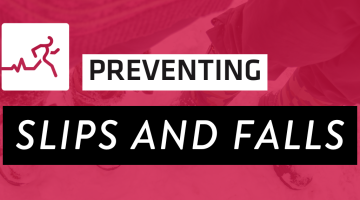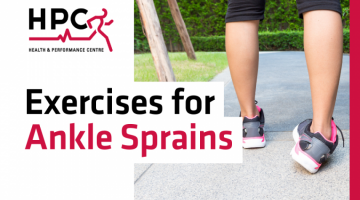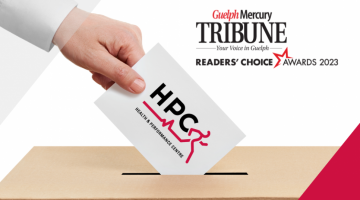Symptoms of Concussion: Visual/Oculomotor

What Are Visual and/or Oculomotor Concussions?
An oculomotor concussion symptom refers to a symptom related to the oculomotor system, which is responsible for controlling eye movement. This can include symptoms such as double vision, blurred vision, and difficulty with eye tracking or focusing. These symptoms can be caused by damage to the cranial nerves that control eye movement, or to the areas of the brain that control eye movement, resulting from a concussion.
Oculomotor symptoms can be particularly challenging because they can affect a person's ability to perform daily activities such as reading, driving, or watching TV. They can also lead to headaches and neck pain, as the person may be straining to see clearly. Oculomotor symptoms may also be associated with other symptoms such as dizziness, vertigo, and balance disorders.
It is important to note that oculomotor symptoms may not appear immediately after a concussion and may take days or even weeks to show up. It is important to seek medical attention after a head injury and follow up with a health professional if any symptoms occur. A physiotherapist or an optometrist specializing in neuro-optometry can help to evaluate and manage the oculomotor symptoms and work on a treatment plan to help the person recover.
What Does it Mean When I’m Told I Have Visual and/or Oculomotor Concussion Symptoms?
Physical symptoms can include visual and eye movement (oculomotor) dysfunctions, which are related to your ability to see and coordinate your eye position during movement. It is important to know that visual and oculomotor dysfunction are commonly experienced after a concussion despite excellent vision prior to the injury.
What is Causing my Visual and/or Oculomotor Symptoms?
A concussion can be caused by direct contact to the head, face, neck, or by an indirect contact to the head by a force experienced elsewhere on the body. The specific symptoms you are exhibiting due to your concussion depend on the specific brain regions that were affected.
The visual system is a widely dispersed network throughout the brain that is susceptible to changes following a concussion, resulting in a variety of oculomotor dysfunction and visual symptoms.
Visual and/or Oculomotor Symptoms of a Concussion:
Common concussion symptoms include:
-
Sensitivity to light
-
Blurred vision
-
Repetitive, uncontrolled eye movement (Nystagmus)
-
Eye strain, pain, or fatigue
-
Difficulty reading
-
Inability to focus
-
Abnormalities in specific eye movements
-
Double vision
It is important to note that visual and oculomotor dysfunctions after a concussion can also contribute to other symptoms such as headaches and dizziness. Abnormalities in specific eye movements will be further discussed during diagnosis and treatment with a health professional who has specific training in oculomotor dysfunction.
How are my Visual and/or Oculomotor Symptoms Diagnosed?
If you suspect you have sustained a concussion, it is important to book an appointment with a medical physician or nurse practitioner to complete a neurological assessment.
The assessment is a series of tests that are used to evaluate your mental status, oculomotor function, sensorimotor system, coordination, gait, vestibular function and balance. However, symptoms may not appear for days or weeks and can vary in duration, making a diagnosis more difficult.
Sport Concussion Assessment Tool – 5th Edition (SCAT-5)
The SCAT-5 is a standardized tool for the diagnosis of a concussion in individuals over 12 years of age and the Child SCAT-5 is used for children ages 5-12 years.
Only a physician or nurse practitioner can diagnose concussions. Visual and oculomotor symptoms are incorporated into the SCAT-5 symptom evaluation where you rate your symptoms on a scale of 0-6 at that point in time. The visual and oculomotor symptoms include difficulty concentrating, sensitivity to light, blurred vision, and dizziness.
For any symptoms reported, the physician or nurse practitioner may perform additional tests to better understand your concussion and recommend the right treatment for you.
Vestibular Ocular Motor Screening (VOMS)
The VOMS is a brief screening tool used in conjunction with other assessments to provide an overview of symptoms requiring further examination when treating your concussion. The VOMS tool measures how the severity of your headache, dizziness, nausea, and fogginess have changed before and after each test by rating your symptoms on a scale from 0-10, with 0 meaning no symptoms are present.
There are five assessments in the VOMS:
-
Smooth Pursuit: Tests the ability of the patient to follow a slow-moving target. In a sitting position, the examiner will hold a fingertip approximately three feet from the patient. The patient is instructed to maintain focus on the target while the examiner moves the target smoothly in the horizontal direction. The test is repeated for the vertical direction.
-
Horizontal and Vertical Saccades: Tests the ability of the eyes to move quickly between two targets. For horizontal saccades, the examiner holds two single points, usually fingertips, approximately three feet from the patient's midline and three feet between targets. The patient is instructed to move their eyes back and forth from the starting position 10 times. This test is repeated with the targets in the vertical direction.
-
Convergence: Measures the ability to see a near target without double vision. The patient is seated and wearing glasses if needed. The examiner observes the eye movement as the patient focuses on a small target of approximately 14-point font size at arm’s length and gradually brings the target toward the tip of the nose. The patient stops moving the target either when they see two distinct images, or the examiner observes an outward deviation of one eye. The test is repeated three times, recording the distance between the target and the tip of the nose. An abnormal convergence exists when the near point of convergence is six centimetres or greater from the tip of the nose.
-
Horizontal and Vertical Vestibular-Ocular (VOR) Test: Evaluates the ability to maintain stable vision as the head moves. The examiner holds a small target of approximately 14-point font size three feet away from the front of the patient. For the horizontal VOR, the patient is instructed to rotate their head horizontally 20 degrees to each side while maintaining focus on the target. A metronome is used to maintain a rotation speed at one beat in each direction for 10 back-and-forth repetitions. The test is repeated by having the patient move their head in the vertical direction.
-
Visual Motion Sensitivity: Assesses sensitivity to visual motion and inhibits vestibular-induced eye movements using vision. The patient stands facing a busy area of the clinic with feet shoulder width apart, holding arms outstretched and focusing on their thumb. While maintaining focus on their thumb, the patient rotates their head, eyes and upper body back and forth approximately 80 degrees for five repetitions.
Can my Visual and/or Oculomotor Symptoms be Treated?
You will find that many of the diagnostic assessments are also used to treat your visual and oculomotor symptoms such as speeded saccadic eye movements from the VOMS test. Common exercises include visual pursuit and tracking tasks, reading tasks, and visual-field scanning.
In some instances, patients are referred to an optometrist or ophthalmologist who are experts in concussion care for the use of vision therapy to mitigate visual and oculomotor symptoms. If you have questions about if vision therapy may be right for you, book an appointment with your doctor.
If you are suffering from concussion, we are here to help you. At HPC, we are proud to say that we are the only clinic in Guelph. To learn more about our approach to concussion management or to book an appointment, reach out to us today!
Book an Appointment
Learn How HPC Can Help
References
Akhand O, Balcer LJ, Galetta SL. Assessment of vision in concussion. Current Opinion in Neurology. 2019;32(1):68-74.
Armstrong RA. Visual problems associated with traumatic brain injury. Clin Exp Optom. 2018;101(6):716-726.
Davis GA, et al. Sport concussion assessment tool - 5th edition. Br J Sports Med. 2017;0:1–8.
Davis GA, et al. Sport concussion assessment tool for childrens ages 5 to 12 years. Br J Sports Med. 2017;0:1–8.
Debacker J, Ventura R, Galetta SL, Balcer LJ, Rucker JC. Chapter 15 - Neuroophthalmologic disorders following concussion. Handb Clin Neurol. 2018;158:145-152.
Fox SM, Koons P, Dang SH. Vision rehabilitation after traumatic brain injury. Phys Med Rehabil Clin N Am. 2019;30(1):171-188.
Joyce C, Le PH, Peterson DC. Neuroanatomy, Cranial Nerve 3 (Oculomotor) [Updated
2020 Jul 27]. In: StatPearls [Internet]. Treasure Island (FL): StatPearls Publishing; 2021 Jan. Available from: https://www.ncbi.nlm.nih.gov/books/NBK537126/
Kontos AP, Deitrick JM, Collins MW, Mucha A. Review of vestibular and oculomotor screening and concussion rehabilitation. J Athl Train. 2017;52(3):256-261.
McCrory P, Meeuwisse W, Dvorak J, et al. Consensus statement on concussion in sport —the 5th international conference on concussion in sport held in Berlin, October 2016. BJSM. 2017;51: 838-847.
Mucha A, Collins MW, Elbin RJ, Furman JM, Troutman-Enseki C, DeWolf RM, Marchetti G, Kontos AP. A brief vestibular/ocular motor screening (VOMS) assessment to evaluate concussions. Am J Sports Med. 2014;42(10):2479-2486.
Boyce, D., Wempe, H., Campbell, C., Fuehne, S., Zylstra, E., Smith, G., Wingard, C. & Jones R. (2020). Adverse events associated with therapeutic dry needling. Int J Sports Phys Ther, 15(1), 103-113.



